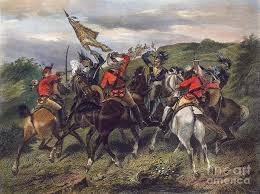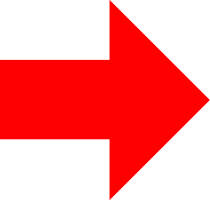The Battle of Cowpens
By Jeannette Holland Austin
South Carolina Pioneers
 |
| Jeannette Holland Austin |
Tarleton was 26 years old and had served with distinction at the Siege of Charleston and the Battle of Camden. Commanding the British Legion, a mixed infantry/cavalry force composed of American Loyalists who constituted some of the best British troops in the Carolinas, Tarleton won decisive victories at Moncks Corner and Fishing Creek. He became infamous among Patriots after his victory at the Battle of Waxhaws. His men had killed American soldiers after they had surrendered. But Tarleton excused it by saying that his horse had been shot out from underneath him during the initial charge and that his men, thinking him dead, engaged in "a vindictive asperity not easily restrained." Afterwards, Tarleton and the Legion marched to Ninety Six and upon learning that Morgan was not there, he decided to pursue. Lord Cornwallis sent the reinforcements requested and Tarleton set out with his enlarged command to drive Morgan across the Broad River. On January 12th, he received word of the Morgan's location. Now drove his men into a hard march and commanded them to build boats to cross rivers which were flooded by winter rains. When Morgan heard that Tarleton was in pusuit, he retreated north to avoid being trappe between Tarleton and Cornwallis.
On January 16th, aware that Tarleton was close, Morgan approached the Broad River, which was high with flood waters. By nightfall he reached a place called the Cowpens, a well-known grazing area for local cattle. Pickens, who had been patrolling, arrived that evening with a large body of militia. Morgan decided to stand and fight rather than continue to retreat and risk being caught by Tarleton while fording the Broad River. But Tarleton denied his troops camp, pushing them to march throughout the night.

Daniel Morgan used the landscape of Cowpens, the reliability of his troops, the assumptions of his opponents and the time afforded him before the arrival of Tarleton to his advantage. He was aware that untrained militiamen comprised a large portion of his force and that the Battle of Camden had ended in disaster when the militia, which was half of the American force, broke and ran as soon as the shooting started. To eliminate that possibility, he stationed his army between the Broad and Pacolet Rivers, selecting a low hill as the center of his position for the infantry and deliberately leaving his flanks exposed. With a ravine on their right flank and a creek on their left flank, Morgan reasoned his forces were protected against British flanking maneuvers at the beginning of the battle.
Meanwhile, the British pushed forward expecting success. Just before sunrise, Tarletons van came out of the woods in front of the Americans and he ordered his dragoons to attack the first line of skirmishers who opened fire. They shot fifteen dragoons while the others retreated. Tarleton quickly ordered an infantry charge before the remainder of his infantry and cavalry could make it out of the woods. He then used his main body to attack the skirmish line, but the American skirmishers kept firing as they fell back to join the second line of the Pickens Militia. The British attacked again, this time reaching the militiamen but were surprised when two volleys were fired upon them. This tactic confused the British officers. They regrouped and continued advancing. Tarleton ordered one of his officers to charge into the "defeated" Americans. His men moved forward in regular formation and were momentarily checked by the militia musket fire but continued to advance while Pickens militia moved around behind and prepared to fire off their second volley. The British took the Americans withdrawal of its first two lines to mean that they were retreating and commenced advancing headlong into the third and final line of the regulars who were awaiting them on the hill. The British Highlanders were ordered to flank the American right but that flanking movement was observed by John Eager Howard who ordered his Virginia militiamen to turn and face the Scots. However, in the noise of battle the order which Howar gave was misunderstood and the militiamen began to withdraw. It was almost 7:45 a.m. when the weary British who had marched all night, became tired and disorganized. When they saw the militia withdrawing, they assumed that the Americans were on the run. So they broke formation and charged. Morgan ordered a volley. The Howard militia stopped their running and made an about-face. The Virginians fired, causing the confused British to lurch to a dead halt. John Eager Howard shouted, "Charge bayonets!" The Continentals mounted a bayonet charge upon the weary british who surrendered and ran. Meanwhile, while the cavalry of William Washington hit the British on their right flank and rear, the Pickens militia charged out from behind the hill and encircled the British highlanders. Then Howard ordered the Virginia militia to turn about and attack the Scots from the other direction.
Nearly half of the British and Loyalist infantrymen fell to the ground whether they were wounded. Their exhaustion was complete. But Tarleton rode back to his Legion Cavalry and ordered them to charge, but they refused and ran off the field instead. The Highlanders, now surrounded by militia and Continentals, surrendered. Desperate to save something, Tarleton found about forty cavalrymen and attempted to save two cannons, but they were gone. He then rode back into the fight, but after clashing with Washington, also retreated from the field. He was stopped by Washington, who attacked him with his saber and shouted "Where is now the boasting Tarleton?" The whole battle had only lasted one hour!
Cherokee County SC Genealogy
More South Carolina Databases
- Bible Records
- Books
- Census Records
- Church Records
- Confederate Births, Deaths, Burials
- Early Settlers
- Folders; Private Collections
- Gedcom Files
- Genealogies and Family Records
- Probate,County Wills, Estates
- Research Notes
- Revolutionary War Pensions


Need to know if your ancestors left a will or estate record? An easy, quick (and free) way to find out is to click on the links below.

County Records of 8 Genealogy Websites
Alabama
Georgia
Kentucky
North Carolina
Virginia
South Carolina
Tennessee
 BUNDLE RATE for 8. Access to all eight websites plus additional data in other States: Bibles, genealogies, civil war records, colonial records, marriages, wills, estates, special collections, books written by renowned Georgia genealogist Jeannette Holland Austin.
BUNDLE RATE for 8. Access to all eight websites plus additional data in other States: Bibles, genealogies, civil war records, colonial records, marriages, wills, estates, special collections, books written by renowned Georgia genealogist Jeannette Holland Austin.
|
Membership to 8 Genealogy Websites - Reoccurring subscription with guaranteed low rate |
| REOCCURRING SUBSCRIPTION WITH PAYPAL = $150 per year. Guaranteed low rate so long as your subscription continues to renew itself. You may unsubscribe at any time, however, to prevent the reoccurring charge, you must "cancel" before the renewal date. To do this, login to your PayPal account and select the cancel option. |
| About your password. Please allow up to 2 hours for your password. If not received in a timely manner, click to send reminder |
FIND SOUTH CAROLINA ANCESTORS NOW!
South Caroliina Pioneers Databases

No comments:
Post a Comment